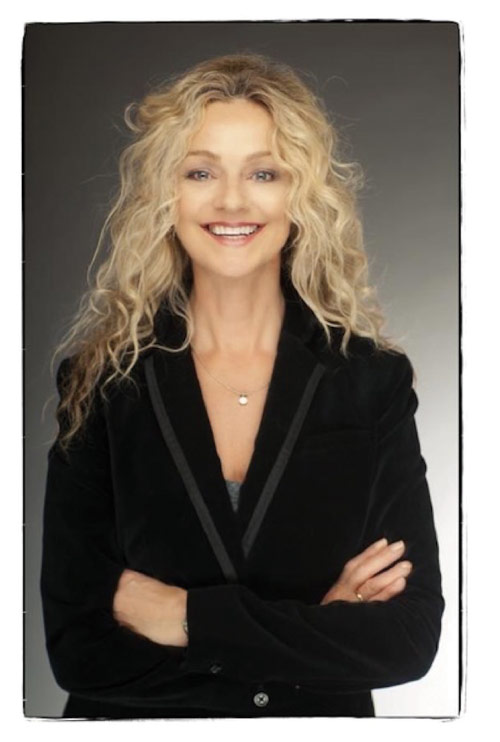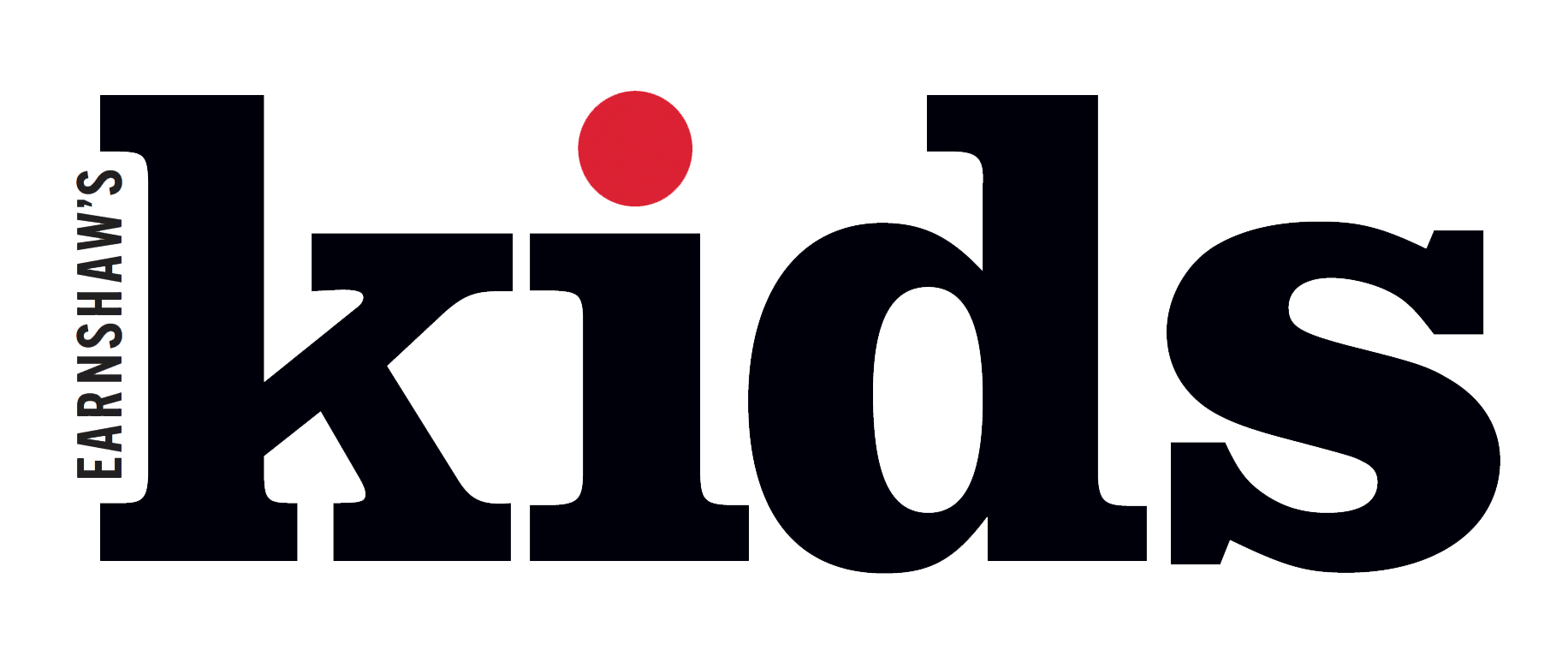Heidi Maria Schwarck, founder and creative director of Luna Luna Collection, reveals how the special occasion brand’s enchanted aesthetic blends seamlessly with its socially responsible manufacturing model.

Heidi Maria Schwarck, founder and creative director of Luna Luna Collection
Raised in a land rich in folklore and fairytales, it’s as though Danish designer Heidi Maria Schwarck was born with pixie dust in her blood. Since 2004, Schwarck has delighted thousands of young girls with the ethereal aesthetic of her Luna Luna Collection special occasion dresses. It’s a fusion of Scandinavian simplicity and enchanted play that’s carved out a niche in the special occasion market that extends beyond a pretty palette of sweet silhouettes. Over the last 15 years, Barneys, Nordstrom’s, Neiman Marcus and an array of leading specialty boutiques nationwide have recognized Schwarck for both her design talents and her corporate social responsibility efforts. These days, good designs are just part of the business equation. How a company goes about manufacturing its goods with respect to sustainability, fair trade practices and cause-related marketing programs is equally important in the age of conscious consuming.
“There’s a lot more to Luna Luna Collection than what meets the eye,” Schwarck says. For example, lining each garment with cotton or silky satin is Luna Luna’s golden rule to never sacrifice comfort for style. “I try to use stretch whenever I can—stretchy seams, smocking, anything that will make the child more comfortable, and we source the softest, most eco-conscious tulle in the world,” she says. To ensure resources are recycled and the use of harsh chemicals forbidden, Schwarck travels at least four times a year to check in on Luna Luna’s factory partner in Indonesia. “Most people don’t realize every stiff tulle has been treated with formaldehyde,” she says, recalling the mysterious rashes she would get on her arms during her childhood ballerina days. To protect her customers, Schwarck banned the use of the chemical in her tutu dresses, which serendipitously gave the brand its signature softness. “It doesn’t matter if a child is dressing up for only a few hours—if something is itchy or uncomfortable, they’ll refuse to wear it for more than two seconds,” she says. Nothing warms her heart more than stories of how kids refuse to take off their Luna Luna dresses. “It’s the ultimate compliment!” Schwarck adds.
Small Talk
First paying job:
Nutella commercial child model.
Most coveted dinner guest:
Pierre Cardin.
Dream employee:
Cate Blanchett.
Three items you can’t live without:
My morning cappuccino, Muji pens and my laptop.
Last book you read:
Outliers by Malcolm Gladwell.
Last person you texted:
My son.
Your motto:
Feel the fear, and do it anyway.
Best business advice you’ve ever received:
Follow your intuition.
Greatest inspiration:
My children.
Best restaurant:
Le Grand Véfour.
Favorite place to shop:
Tokyo.
As a mother of three, Schwarck’s concern for the well-being of the children who wear her garments extends to the artisans who craft them. When the designer learned that most of the beaders were single mothers commuting three to four hours everyday, she was heartbroken by the time away from their families. She decided to do something about it. Schwarck began to avoid beading on cross seams and other complex areas so the beaders can work on parts of a garment at home and get paid by the piece. “I couldn’t be someone who wanted to be with my children yet ripped that opportunity from moms working for us,” Schwarck says. “This gives women—especially single moms—an opportunity to enjoy their children and make money. To say it’s been a rewarding program is an understatement.”
Luna Luna has since expanded its responsible manufacturing efforts with the creation of a scavenger recruitment program in tandem with the debut of its hair accessories collection last year. Scavengers in developing countries like Indonesia work in dangerous, miserable conditions with little to no pay. It’s often a vicious cycle of poverty for them and their families. Again, Schwarck decided to do something about it. She introduced a program that teaches scavengers how to craft hair accessories out of Luna Luna’s cutting room floor scraps. The scavengers-turned-sewers are also encouraged to bring their children to work, so they can be inspired by opportunities beyond a life of scavenging. For Schwarck, the program is just how Luna Luna goes about its daily business. “We don’t blast these efforts as part of a marketing strategy—we’re not like Toms,” she says. “I just think it’s important to do what’s right, whenever you can.”
The Royal Danish Academy of Fine Arts grad has done a lot right since arriving in Manhattan’s fashion scene in the early ’90s at 25 years old. She first made a name for herself in the women’s wear market, designing for industry leaders like Bill Blass, Tahari and Jones New York. But it wasn’t until her family relocated to California, after the arrival of her third child (Luna), that Schwarck began dabbling in childrenswear design. Having checked out of the fast-paced, high-end fashion designer world to become a stay-at-home mom, Schwarck had no intentions of launching a dress company. Rather, she was casually designing hats for her bald baby daughter that caught the eye of neighborhood moms. “My first design had little ears with bows that made her look like she had pigtails,” Schwarck says. “Eventually, I was put in contact with an agent in Los Angeles, which helped spread the word.” Next up was placement in several high-end boutiques frequented by celebrities. Children of Tom Cruise, Halle Berry, Milla Jovovich and Kobe Bryant, to name a few, were photographed sporting Luna Luna. “That’s when we just exploded,” she says.
Celebrating Luna Luna’s 15th anniversary this year, Schwarck is happy to report business is better than ever. She credits her loyal retail partners, first and foremost, for the company’s success, and is grateful for the wonderful relationships she’s built in the industry. “Luna Luna was launched from a place in my heart that makes it more than just a business,” Schwarck says. “I want my retailers to tell me all about their customers, what’s working, what isn’t, what they’re concerned about, because we’re in it together. Humanity is our brand DNA.”
How’s business?
Great! We’re stocked in hundreds of supportive retailers who tell our story so wonderfully. They make sure everyone knows our tutus aren’t treated with formaldehyde and are made by hand by hard-working women in Indonesia who bead every detail on every dress. Last year, we introduced hair accessories, which has been very successful. Luna Luna customers used to have to cart dresses back and forth from the accessories area to try and find a match. Now, that’s no longer necessary.
Are retailers seeking more coordinating add-ons?
Yes, and I think it’s a great idea. I suggest putting small accessories in a basket by the counter, because customers will just pick them up like lipstick. Also, while some people cannot afford a Luna Luna dress, it’s nice when they can purchase one of our beautiful hair accessories and still feel special that day.
What’s your secret to creating successful designs?
I name every new design, because each dress should have its own personality. This may sound crazy, but when I’m designing a new dress I always ask myself who she is and where is she going to be worn. Is it a first birthday party, a piano recital, a flower girl…if I can’t pinpoint where she is going, then it’s not a good design. It’s important to ask those questions because they are all special occasions and the dress must be truly special. Designing a dress isn’t just sitting there putting bows on materials and making a “pretty” dress. It’s a lot more personal and detailed than that.
Did your background in women’s fashion help your crossover into childrenswear?
Absolutely! It helped having a general idea of what to expect, for starters. I knew the ropes and how navigate certain areas of launching a brand that would have otherwise been more difficult. I tried to use that experience to stay ahead of the game in production and customer service. I think the most nerve-wracking part of the transition from designer to entrepreneur was being completely self-financed. That’s a whole other level of responsibility and stress. Luckily, it turned out to be well worth it.
There must have been some culture shock shifting from a corporate work environment to launching a business in your home.
For sure. I’ll admit, it took some adjustment. I knew I wanted an office in my home, but you quickly learn that you’re constantly disturbed—kids, dogs, cats—you name it. I was lucky we had the space to set up part of the house as an office. As we grew and added employees, the kids learned that it took a broken arm to enter that office door. Seriously, I would never give up my first priority of being a mom, and I love working from my home. I think many women forget how much of a privilege it is to raise your kids. I was able to stay hands-on, pick them up from school, take them to dance class—some of our best conversations happened in the car.
Where do you look for design inspiration?
I don’t think this industry is directed by trends, so I prefer to isolate myself and create from the inside. That’s why our campaign images are so important—it’s a way to show who the Luna Luna girl really is.
Would you say kids’ fashion is becoming more sophisticated overall?
I think it’s more about kids having the ability to show off their own personality, which is a byproduct of social media. You could argue everyone is a “brand” these days. Look at fashion shows and the bold personalities walking down the runways.
What’s been the most effective marketing tool for Luna Luna?
Influencers are very important now. I’ve had many reach out to me, but I only work with those that seem to be true Luna Luna fans. Overall, I’ve had a great experience working with them and highly recommend up-and-coming brands to give that avenue a try.
How do you know what influencer is right for Luna Luna?
Besides vetting them online, I try to meet them in-person, either at a trade show or other industry events. It’s nice to meet who you’re working with face to face in this very digitally driven world.
Are your retail partners up to speed on social media?
Not enough. I usually ask retailers if they have an Instagram account, and the response too often is: ‘Oh, I still have to figure that out,’ or ‘Oh, I meant to get that going last month.’ My best advice is to start now. Some of our retailers are doing amazing with great Instagram feeds. Elegant Child in Boca Raton, FL, is one example. They post every day. She has people reaching out to her constantly asking, ‘Do you have that dress?’ or ‘What’s new from my favorite brand?’ It’s extremely beneficial for sales. She’s even getting sales through direct messages on Instagram. Instead of sitting in your store waiting for people to walk through the door, you’re now able to get hundreds of customers going through that virtual door every day—if you’re on it. It’s a great way to build new relationships, collect information and make sales. Let’s face it, that’s how Millennials shop today. They’re not buying through websites as much. And if you want to break into the Asian market, you definitely need to be on Instagram because all your future clients are using it there.
With so much visual content online, would you recommend a bigger budget for creative materials to help standout?
Yes, creative is probably our biggest budget. If you’re going to have a successful digital presence, you’re going to need images—good ones. As a brand, you want to provide visual packages for your stores, so they don’t have to do extra work shooting product for their own website and social media feeds. You also want your visual message to stay consistent, wherever the customer may be. Why have a retailer throw a garment over a chair and taking a quick snapshot, when you could provide them with professional photographs that encompass your brand message? It’s just another way to be a supportive, worthwhile partner.
How else do you strengthen relationships with retail partners?
It’s all based off listening to our retailers, delivering faster than what’s perceived as “normal.” We do small batch production, so we’re able to turn styles around fairly quickly. In this retail climate, it’s very hard for stores to purchase a year in advance, not really knowing what’s going to happen with business. Especially when you’re dealing with special occasion and small boutiques in today’s market, it’s important to accommodate retailers who are trying to predict what their inventory will be like. Right now, they’re hesitating to commit to a large order upfront. And to be fair, tutu dresses do take up a lot of space!
What do you love most about being a designer?
I love seeing a collection take shape in front of my eyes. That rush when your heart’s beating fast, knowing you have a good style and the people you work with see it too—that never gets old. I also love introducing initiatives on our manufacturing side that help fellow moms. As a whimsical dresswear brand, we will always believe in the magic of making others’ dreams come true.
























Leave a Comment: